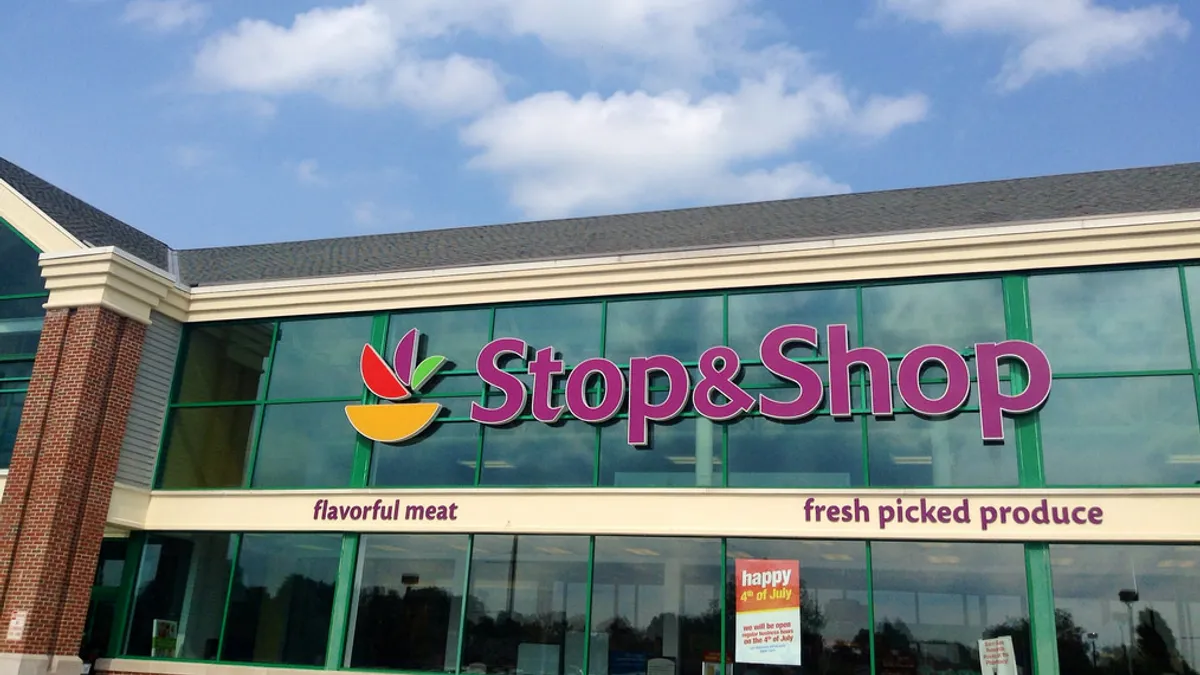Dive Brief:
- Hy-Vee opened its first Fast & Fresh store opened in Iowa which serves as a full-service supermarket with a convenience store feel, according to the Quad-City Times. The store is designed for people on the go who want quick meal solutions and staples — without a lot of hassle.
- Hy-Vee Fast & Fresh is much smaller in comparison to a traditional store — just 10,000 square feet — and is designed for efficiency. The mini-grocery store offers made-to-order wood fired pizzas, sushi, meal kits and other private label foods. The chain is looking for opportunities to expand the Fast & Fresh brand in its eight-state region, following other major retailers who have decided to go small.
- Separately, Stop & Shop announced Friday the opening of a new 20,950-square foot store in Massachusetts. The small concept store will focus on fresh items, in-store experiences like brisket, baby back ribs and growlers that can be filled up at a kombucha fountain, and more grab-and-go items.
Dive Insight:
With the rise of discount grocers such as Aldi and competition from online retailers like Amazon, traditional grocery stores are looking for ways to attract and keep today’s evolving customer. Consumers, particularly younger individuals, are often making shopping trips specifically for when they plan to cook, rather than the traditional weekly stock-up visit. They also want convenience — that means they want to find what they need easily and have lots of affordable options to choose from. Location matters, too, as many young families are opting for the urban lifestyle where space is often limited.
In the case of the new Fast & Fresh, the store’s size fits in at a busy intersection and also features a drive-through Starbucks and a 14-pump gas station, the Quad-City Times reported. In addition to a self-serve soda fountain, the store has a selection of wine, spirits and a craft beer growler bar. It’s clear the design is for people who don’t have a lot of time to shop and want quick meal solutions and easy to find staples.
Building smaller stores and focusing on niche groups of customers is a trend with momentum. Hy-Vee has found success with its HealthMarket concept, a neighborhood store designed with health and fitness in mind. The 15,000 square foot location in Des Moines has a selection of sports nutrition and supplements, fresh meat, produce, dairy and natural beauty and body care products.
For Stop & Shop, an Ahold Delhaize banner, the chain is touting many of the same things being valued by consumers when it comes to convenience. It not only has a deli, fresh salad bar and sushi made in the store for the on-the-go person, but it gives consumers the opportunity to scan items and pay with their cell phones, as well as curbside pickup.
Publix opened their new GreenWise Market in Tallahassee in October in an attempt to reach younger shoppers with fresh, prepared food and experiences like in-store eateries and a lounge. Meijer’s smaller Bridge Street Market in Grand Rapids opened in August to help capture quick in-and-out shopping trips. While Target has already opened small city stores across the country and plans to expand to 130 locations by the end of next year. Even e-commerce giant Amazon has gone small, opening another Go store in Seattle that is much smaller — only about 450 square feet — than its previous cashierless convenience stores.
At the same time, convenience stores are already excelling in efficiency and are adding more products – including prepared foods and fresh produce – making them an enticing option to replace the traditional shopping trip altogether. Food sales in convenience stores, which includes both prepared food and beverages, are $52 billion, or 22% of all in-store sales, according to a 2017 National Association of Convenience Stores report. Freshly prepared food and packaged sandwiches are $35 billion of that total.
If grocers continue to combine the convenience of a c-store with the selection and quality of their own traditional market, they may be able to capture more non-traditional shoppers – not just millennials, but busy parents, retirees, singles and anyone who wants to spend less time shopping and more time enjoying their food.









